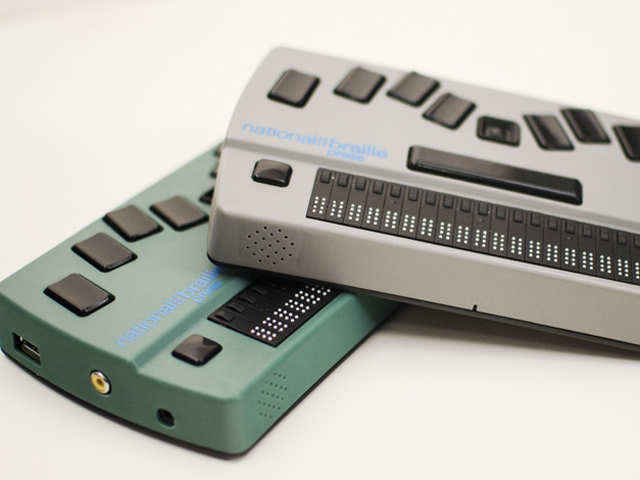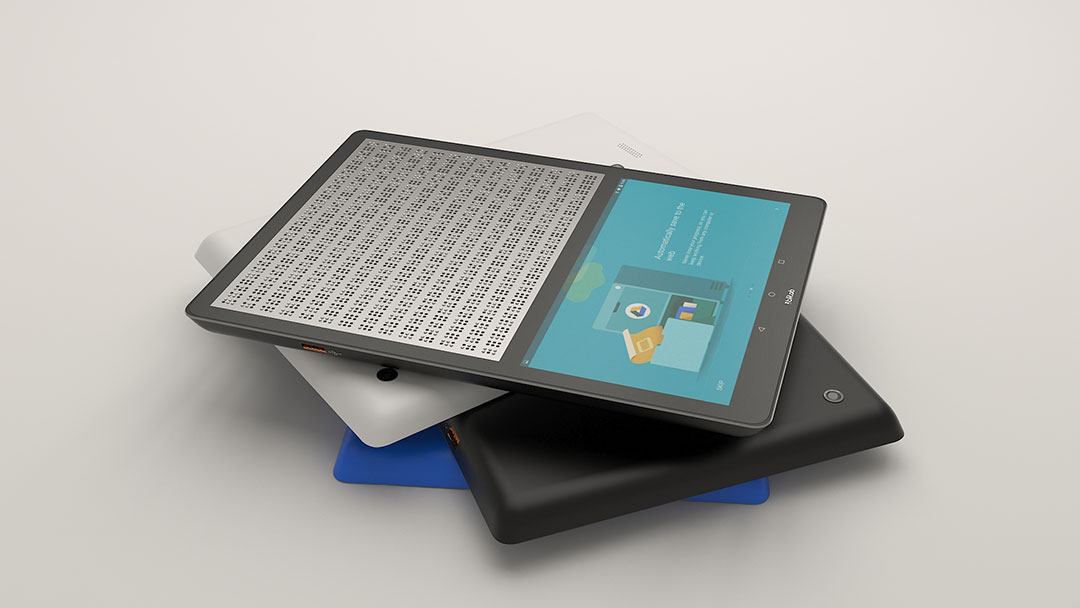Mobility Aids for Visually Impaired Users: Improving Freedom
Mobility Aids for Visually Impaired Users: Improving Freedom
Blog Article
Empowering Independence With Assistive Technology for the Blind
The integration of assistive modern technology right into the lives of people with aesthetic disabilities represents a substantial advancement in promoting freedom and self-sufficiency. From innovative display visitors to innovative smart walking canes, these devices not only improve daily navigating and communication but likewise encourage customers to engage meaningfully in various elements of life. As we check out the myriad benefits and real-world applications of these technologies, it comes to be essential to check out the hidden factors that add to their performance and the potential for future growths in this vital field.
Introduction of Assistive Technology

The growth of assistive innovation is grounded in principles of inclusivity and empowerment. Innovations in software, equipment, and sensory enhancements provide individuals with alternatives tailored to their details requirements. From display readers that convert message to speech, to responsive devices that convey info through touch, these tools change the way people engage with their surroundings.
Along with practical applications, assistive modern technology promotes better social inclusion and participation in different industries, consisting of education and employment (Assistive technology for the blind). As r & d remain to evolve, the potential for assistive innovation to even more boost the lives of visually damaged people continues to be promising, leading the way for a more fair culture where every person can flourish
Sorts Of Assistive Tools
A selection of assistive devices have actually emerged to sustain individuals with aesthetic impairments, each made to satisfy particular demands and boost daily functioning. These devices range from low-tech solutions to modern innovations, providing varied alternatives for customers.
Low-tech gadgets include magnifiers and large-print products that help in reading and writing. Braille tools, such as Braille styluses and slates, allow tactile analysis and interaction. Alignment and mobility help, like white walking canes, assist individuals browse their setting securely.
On the greater end of the spectrum, electronic zoom systems and screen viewers supply significant assistance. Electronic magnifiers allow users to increase the size of text and images on screens, while screen readers convert electronic web content into manufactured speech, promoting access to details on mobile phones and computers.
Smart device applications additionally play an essential duty, supplying functions like text acknowledgment and navigating support. Wearable innovation, such as clever glasses geared up with enhanced fact, is arising as an appealing device to boost situational understanding.
Benefits of Assistive Innovation
The assimilation of assistive innovation dramatically improves the lifestyle for individuals with visual problems. These modern technologies equip individuals by advertising freedom, allowing them to navigate their atmospheres more properly and perform everyday jobs with better simplicity. As an example, screen viewers and magnifying software allow people to accessibility digital details, promoting professional and academic chances that may have formerly been out of reach.
Moreover, assistive devices such as clever walking canes and general practitioners applications supply real-time navigation aid, boosting wheelchair and security. This raised freedom not only enhances self-esteem but also motivates social interaction, permitting customers to get involved even more fully in their communities.
Assistive innovation also assists in communication, aiding users get in touch with others via voice recognition and text-to-speech applications. This ability is vital for maintaining partnerships and accessing critical information.
In addition, the customization options readily available with several assistive innovations make sure that users can tailor tools to their specific needs, further boosting usability and effectiveness. Generally, the benefits of assistive innovation for people with aesthetic problems are profound, promoting a much more comprehensive society where everyone can seek their objectives and ambitions.
Case Researches and Success Stories
Highlighting the transformative effect of assistive modern technology, numerous instance studies illustrate just how people with aesthetic impairments have efficiently incorporated these tools into their day-to-day lives. One engaging example entails an university student that used display reading software to navigate online resources find this and scholastic materials nearest optometrist successfully. This technology not just promoted her education and learning however likewise improved her self-confidence in joining discussions and group projects.
Another study includes a specialist that uses a smartphone application created for navigating and things acknowledgment. By using this app, he has actually restored autonomy in both his personal and workplace, allowing him to commute independently and engage with colleagues much more successfully.
Furthermore, a senior citizen shared her experience with braille e-readers, which allowed her to access a vast variety of literary works and stay gotten in touch with her community via publication clubs.
These success stories highlight the essential role of assistive modern technology in cultivating self-reliance, improving lifestyle, and promoting social integration for people with aesthetic impairments (AI-powered visual aids). By accepting these ingenious tools, users can get over difficulties and seize opportunities that add to their individual and expert satisfaction

Future Trends in Assistive Innovation
Advancement in assistive innovation is positioned to redefine the landscape of support for people with visual problems. Emerging patterns highlight the integration of fabricated knowledge (AI) and artificial intelligence, which improve the performance of tools that help with navigation and information access. AI-driven applications are currently qualified of translating visual information in real-time, enabling customers to involve with their atmosphere a lot more separately.
Additionally, the growth of wearable innovation is advancing rapidly. Smart glasses equipped with increased fact (AR) can provide audio summaries of environments, changing just how users engage with public spaces. These tools not just promote autonomy yet likewise foster social incorporation.
Additionally, the Internet of Things (IoT) is making homes smarter, permitting seamless connection between see this site assistive gadgets and day-to-day home appliances. This connectivity empowers individuals by enabling automated reactions and voice-activated controls customized to specific requirements.
Final Thought
To conclude, assistive modern technology plays an essential duty in empowering people with aesthetic problems by improving their self-reliance and involvement with their surroundings. The diverse variety of applications and gadgets offered not just facilitates navigating and communication however additionally advertises social combination and opportunities for expert and personal growth. As advancements continue in this field, the possibility for boosting the top quality of life for those with aesthetic problems will certainly expand, promoting higher autonomy and empowerment.

Report this page